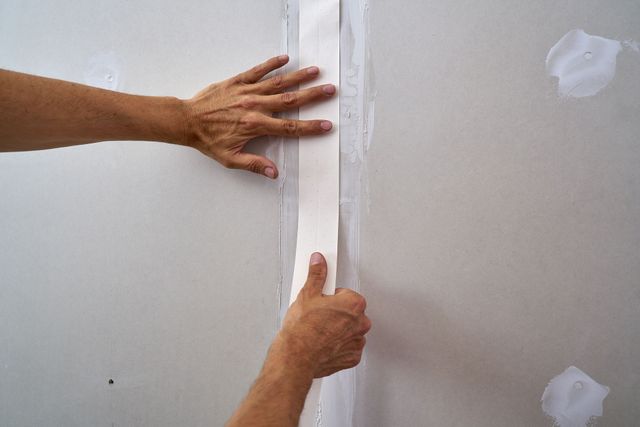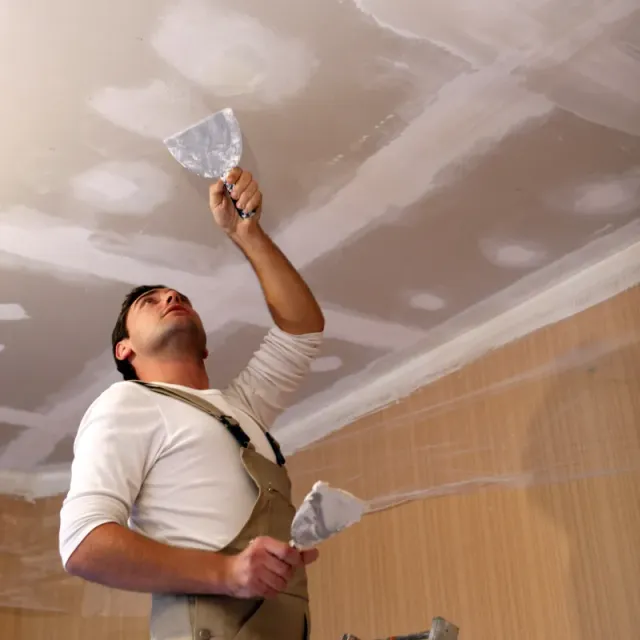Drywall Repair Ogden UT offers dependable services that complement Interior Painting.
Necessary Tips for Effective Drywall Repair and Setup Strategies
Effective drywall repair work and setup needs a careful strategy. Understanding the types of drywall and having the right devices is crucial. Precise measurements and appropriate methods can significantly impact the result. Several ignore essential actions like taping and fining sand, which can make or damage the final look. As jobs proceed, common difficulties may develop that require interest. Discovering these tips can cause a much more effective and polished finish.
Understanding Different Kinds Of Drywall
Understanding the different kinds of drywall is important for any successful repair work or installment project. Drywall, typically called plaster board, can be found in numerous ranges tailored for details applications. Requirement drywall is the most extensively made use of type, perfect for general interior wall surfaces and ceilings. Moisture-resistant drywall, commonly green in shade, is created for areas vulnerable to humidity, such as kitchens and bathrooms. Fire-resistant drywall, typically tinted pink or purple, is engineered to endure higher temperature levels and is typically utilized in garages or near heating systems. Furthermore, soundproof drywall aids lower noise transmission, making it ideal for multi-family homes or tape-recording studios. Specialty drywall, like concrete board, is used in wet locations like showers or tub borders. Comprehending these kinds assists in choosing the appropriate product for each and every job, making certain longevity and effectiveness out of commission or new installations.
Vital Devices for Drywall Fixing and Setup
Having the right tools is important for reliable drywall repair service and installation. A top quality utility knife is critical for reducing drywall sheets exactly. A drywall T-square assists guarantee straight edges, while a taping knife is required for using joint compound efficiently over joints. Additionally, a drywall saw permits reducing out damaged areas or suitable drywall around fixtures.
For hanging drywall, a power drill with drywall screws is essential, as it enables protected and fast installment. A degree is additionally vital to verify that the drywall is straight and effectively lined up. Once it has actually dried out, a fining sand block or pole sander is crucial for smoothing out joint compound. A gauging tape is important for precise dimensions, preventing waste and ensuring a correct fit. Furnished with these tools, people can tackle drywall projects successfully, leading to professional-looking results.
Step-by-Step Guide to Fixing Holes and Cracks
When addressing openings and fractures in drywall, having the right tools and products is vital for a successful repair work. This guide outlines the required things and offers a clear, detailed procedure to properly bring back the surface. Recognizing these aspects will help assure a smooth finish and durable outcomes.
Tools and Products Needed
A fully equipped toolkit is essential for effective drywall repair work and setup. Trick devices include an utility blade for reducing drywall, a tape measure to assure precise sizing, and a drywall saw for bigger openings. A putty blade is crucial for applying joint substance efficiently, while a fining sand block or pole sander assists attain a seamless coating. For patching, a roll of fiberglass fit together tape or paper tape is necessary to strengthen joints. Additionally, a drill and screws are required for securing new drywall pieces. Crucial products include joint substance, primer, and paint to finish the repair. Having these devices and products handy ensures a smoother, more efficient repair procedure, generating professional-looking outcomes.
Repair Process Actions
Repairing holes and splits in drywall calls for a methodical approach to assure a smooth finish. The location bordering the damages needs to be cleansed completely to get rid of dust and particles. Next off, for small fractures, a putty knife is used to use a joint compound uniformly over the location. For bigger openings, a spot is essential; the damaged area is cut out, and a brand-new piece of drywall is fitted in area, protected with screws. Once the spot is in setting, joint substance is used to mix the edges. After drying, fining sand the location smooth is necessary. Finally, the repaired surface area must be primed and repainted to match the surrounding wall surface, making sure an unnoticeable repair work.
Methods for Setting Up Drywall Panels
Setting up drywall panels requires cautious planning and precise implementation to assure a smooth and expert surface. First, it is necessary to gauge the wall surface area precisely and reduce the panels to fit, ensuring that they line up with the studs. Positioning the panels flat is usually advised, as this can boost the architectural honesty and decrease the number of joints.
Using drywall screws, installers should safeguard the panels every 16 inches along the studs, making certain a firm hold. It is important to prevent overdriving the screws, which can damage the paper surface area. For corners and sides, using an utility knife permits for tidy cuts and a tight fit.

Completing Touches: Taping, Mudding, and Sanding
Once the drywall panels are firmly in position, the next essential step involves the finishing touches of taping, mudding, and sanding. Taping is necessary for producing a seamless change between panels and hiding joints. A quality drywall tape, either paper or fiberglass mesh, should be used over the joints, ensuring it sticks appropriately to the mud that will certainly be applied following.
Mudding, or applying joint compound, complies with the taping procedure. This substance loads voids and ravel the surface. A first layer ought to be applied generously, feathering the edges to blend with the drywall. After the initial layer dries, subsequent layers may be needed for a perfect finish.
Lastly, fining sand is essential to accomplish a smooth surface area. A fine-grit sandpaper should be utilized to gently smooth out any type of imperfections. Care needs to be taken to stay clear of over-sanding, which can harm the drywall - Drywall Repair read this post here Ogden UT. Properly implemented, these ending up touches produce an expert appearance all set for paint
Tips for Preserving Your Drywall After Installment
Keeping drywall after installment is crucial to protecting its look and structural stability. Normal cleansing is needed; dust and dust can collect, so gentle cleaning with a damp towel is suggested. Home owners need to additionally check for any type of indicators of wetness or mold, especially in high-humidity locations like restrooms and cooking areas. If any kind of damage occurs, it's essential to resolve it without delay to stop further issues.
Using furnishings pads can aid avoid scratches or damages from hefty products. Furthermore, painting the drywall with a high-quality, cleanable paint supplies an additional layer of security and makes future cleansing much easier. Avoid utilizing unpleasant cleaners or devices, as these can harm the surface area. Ultimately, keeping a stable indoor climate with suitable humidity degrees will certainly help avoid cracking or warping in time. By following these pointers, one can guarantee that drywall stays in superb condition for many years to find.
Frequently Asked Concerns
For How Long Does Drywall Take to Completely Dry After Installation?

Can I Install Drywall Over Existing Drywall?
Yes, drywall can be installed over existing drywall, yet it is vital to ensure the underlying surface area is safe and secure and properly prepared. This technique can enhance insulation and reduce installment time, though it may include weight.
What Is the Ideal Method to Soundproof Drywall?
The best way to soundproof drywall entails utilizing specialized soundproofing materials, such as resistant networks, acoustic caulk, and sound-dampening drywall. These techniques successfully minimize audio transmission between rooms, improving total acoustic efficiency in living rooms.
Just how Do I Select the Right Drywall Density?
To pick the best drywall density, consider the application and area. Standard property wall surfaces generally utilize 1/2 inch, while ceilings or specialized areas might need 5/8 inch for extra toughness and soundproofing abilities.
Exist Eco-Friendly Drywall Options Available?
Yes, environment-friendly drywall options are available. These consist of items made from recycled materials, plaster boards with low unpredictable organic substances (VOCs), and those using sustainable manufacturing procedures, offering environmentally-conscious selections for construction and improvement jobs.
Having the right tools is important for effective drywall repair work and setup. For hanging drywall, a power drill with drywall screws you can find out more is indispensable, as it allows protected and quick installation. Trick tools consist of an energy knife for cutting drywall, a tape measure to guarantee exact sizing, and a drywall saw for larger holes. Yes, drywall can be installed over existing drywall, however it is essential to guarantee the underlying surface is secure and adequately prepared. The ideal way to soundproof drywall involves using specialized soundproofing products, such as durable networks, acoustic caulk, and sound-dampening drywall.